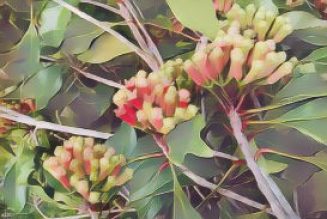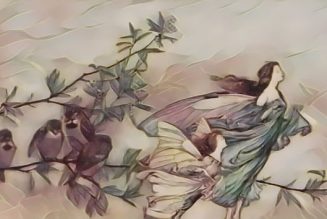Foxgloves, or Digitalis purpurea, are among the most enchanting and mysterious plants found in the wild and in gardens. These biennials can reach impressive heights of up to six feet, their tall, elegant spires rising above the undergrowth like sentinels of the woodland edge. The leaves are large, lance-shaped, and slightly hairy, with a deep, lush green hue and pronounced veins that run the length of each blade. In their first year, foxgloves form a rosette of leaves close to the ground, storing energy for their spectacular flowering in the second year.
The flowers themselves are a marvel of nature—tubular and bell-shaped, often in shades of purple, pink, and white, with intricate speckled throats that seem to invite closer inspection. Each blossom dangles delicately from the tall stem, forming dense, spire-like clusters that sway gently in the breeze. These blooms are not only visually stunning but also serve as vital sources of nectar for bees, butterflies, and other pollinators, making foxgloves an important part of the ecosystem.
Foxgloves thrive in a variety of habitats, from the dappled light of woodland edges to open meadows and even rugged highland slopes. Their deep roots help stabilize the soil, preventing erosion and providing shelter for countless insects and small creatures. In the wild, foxgloves often form natural borders along paths and clearings, their presence signaling a healthy, balanced environment.
Historically, foxgloves have played a significant role in herbal medicine, most notably for their heart-stimulating properties. The plant contains powerful compounds called cardiac glycosides, which, when used correctly, can regulate heart rhythm and strengthen cardiac function. In the late 18th century, the physician William Withering famously documented the use of foxglove in treating dropsy, a condition related to heart failure. However, the line between medicine and poison is razor-thin—every part of the foxglove is highly toxic if ingested improperly, and even small amounts can cause serious harm or death. For this reason, foxglove should never be used internally without expert guidance, and it is best admired for its beauty and magical associations.
The folklore surrounding foxgloves is as rich and varied as the plant itself. In many traditions, foxgloves are closely linked to the realm of fairies and the supernatural. One popular tale suggests that the name ‘foxglove’ is a corruption of ‘folk’s glove,’ referring to gloves worn by fairy folk as they flit through the woods. Another story tells of fairies gifting the flowers to foxes, who would slip them over their paws to move silently through the night, evading hunters and sneaking into henhouses. The distinctive spots inside each flower are said to be the fingerprints—or handprints—of fairies, marking the plant as a bridge between the human world and the unseen realms.
In magical practice, foxgloves are revered for their potent protective qualities. Witches and cunning folk have long hung dried foxglove flowers above doorways and windows to ward off evil spirits, malicious entities, and negative energies. Foxglove charms, often tied with red thread, are believed to shield the home and its inhabitants from harm, creating a barrier that only benevolent spirits may cross. The plant’s association with boundaries and thresholds makes it especially powerful in spells designed to protect, purify, or consecrate sacred spaces.
Foxgloves are also valued for their ability to enhance psychic abilities and intuition. Placing fresh or dried foxglove blossoms on an altar during divination rituals is thought to open the third eye, heighten spiritual awareness, and strengthen connections to the spirit world. Some traditions recommend carrying a small sachet of dried foxglove when seeking guidance from dreams, engaging in scrying, or attempting to communicate with ancestors and guides. The plant’s energy is said to act as a conduit, amplifying subtle messages and insights from beyond the veil.
The deep connection between foxgloves and the fairy realm is honored in rituals that seek the favor or blessing of the Fae. In some cultures, leaving an offering of foxglove flowers at the edge of a woodland is believed to invite fairy blessings, ensure safe passage through enchanted places, or attract magical allies. During midsummer celebrations, foxgloves are woven into garlands, crowns, or wreaths, symbolizing the union of earth and sky and inviting good fortune for the coming year.
Symbolically, foxgloves represent both protection and the threshold between worlds. Their tall, spire-like growth is seen as a bridge connecting the earthly and the spiritual, making them a powerful ally in spells for transformation, spiritual growth, and communication with unseen realms. The plant’s dual nature—beautiful yet deadly, healing yet dangerous—reminds us of the importance of balance, respect, and caution in all magical work.
When working with foxgloves, always exercise the utmost care. Wear gloves when handling the plant, and wash your hands thoroughly afterward. Never ingest any part of the foxglove, and keep it out of reach of children and pets. If you wish to incorporate foxglove into your magical practice, use dried flowers or leaves in sachets, charms, or ritual decor, and focus on its symbolic and energetic properties rather than physical consumption. By honoring the foxglove’s power and respecting its dangers, you can safely invite its magic into your life, drawing on centuries of tradition and the wisdom of the natural world.



















